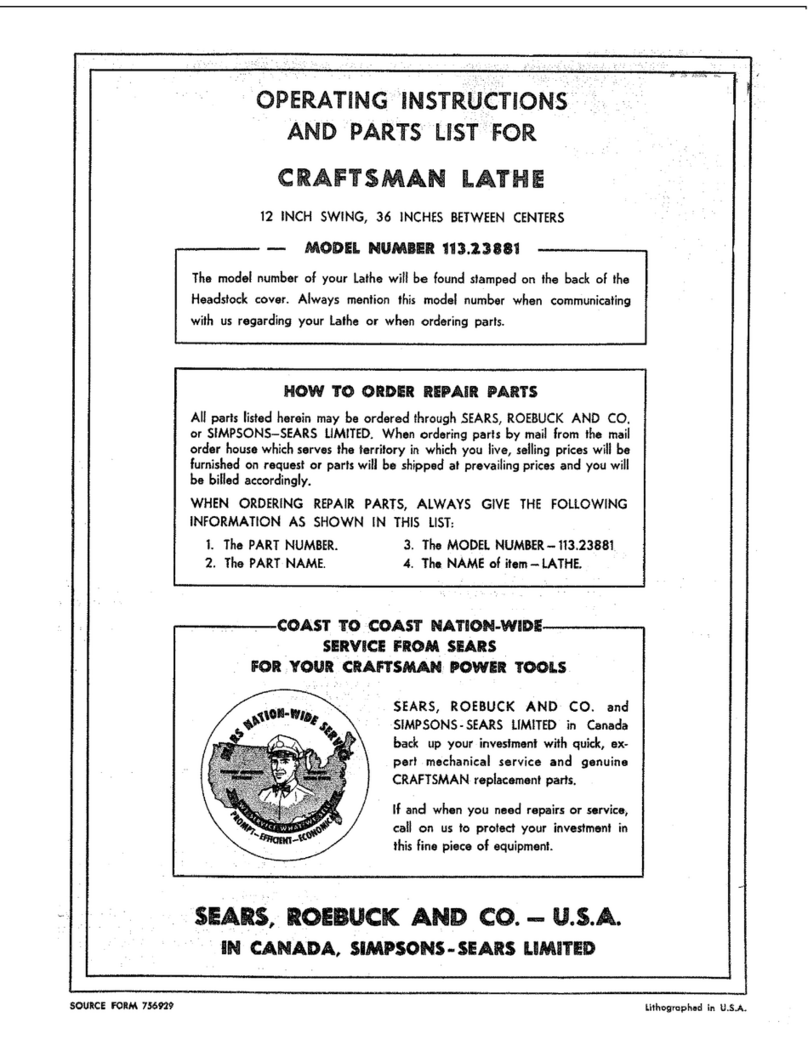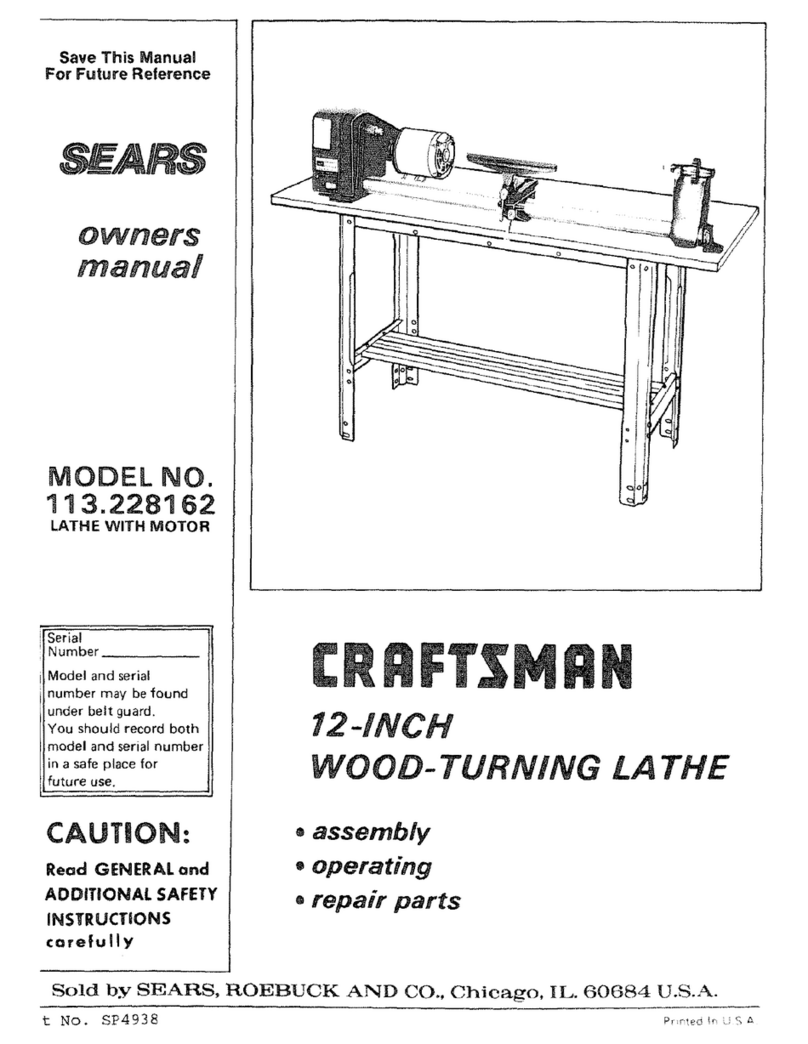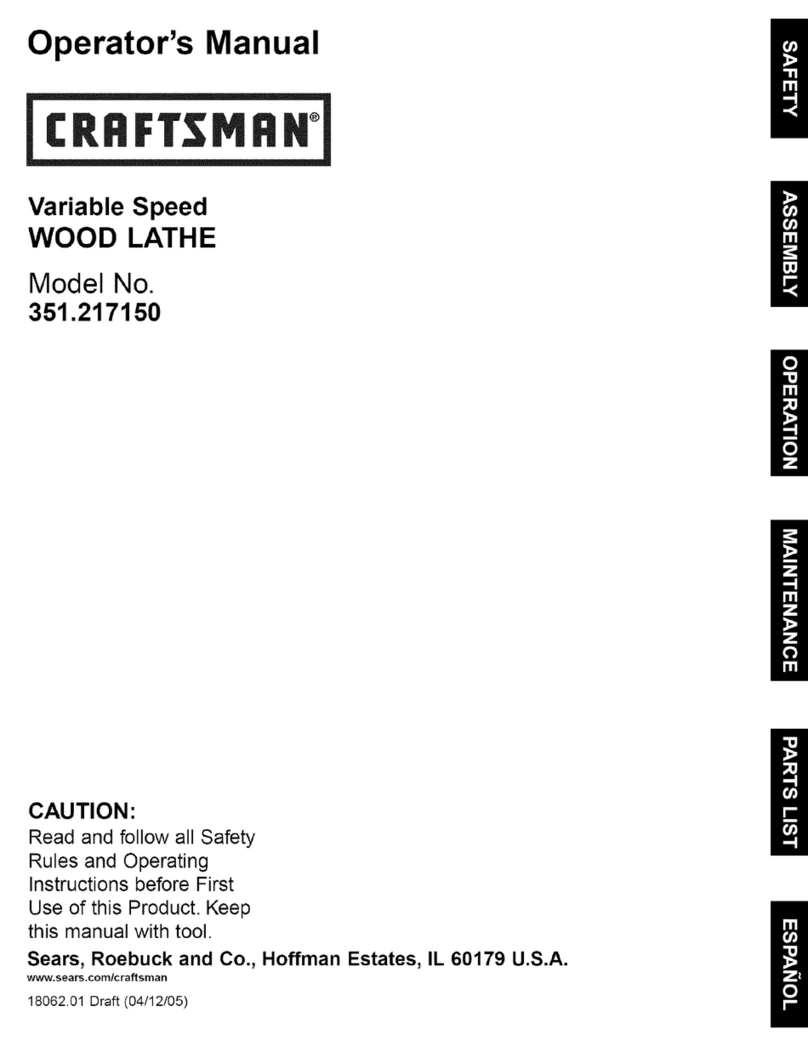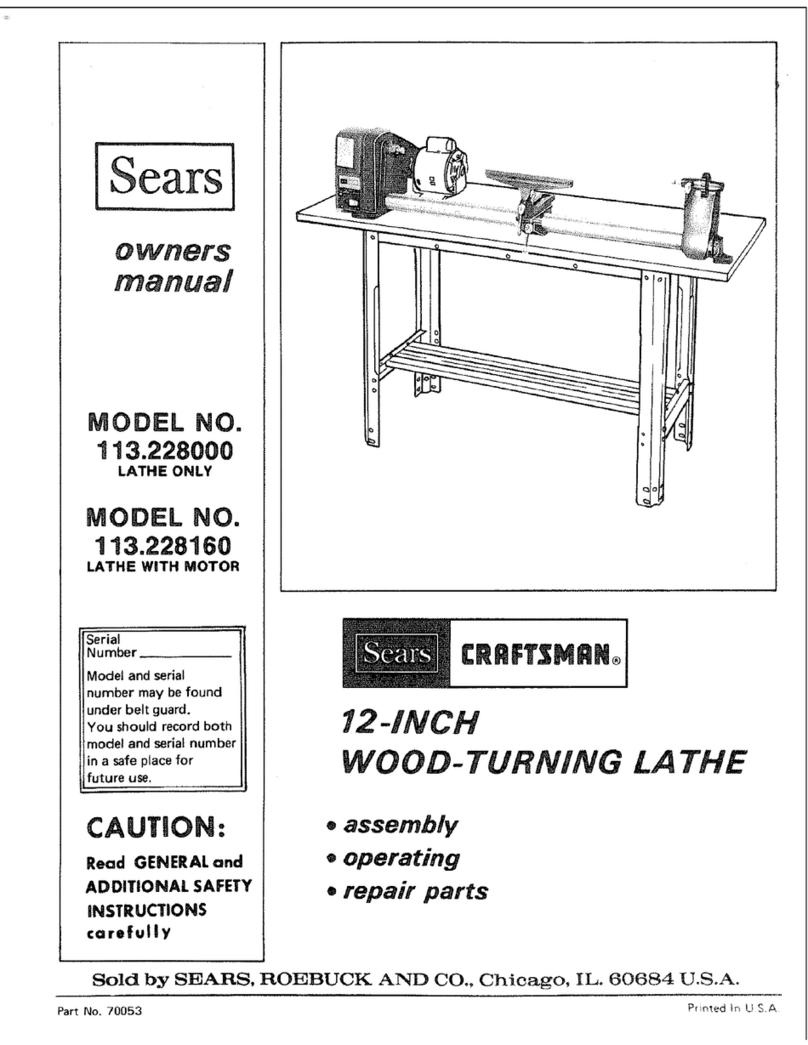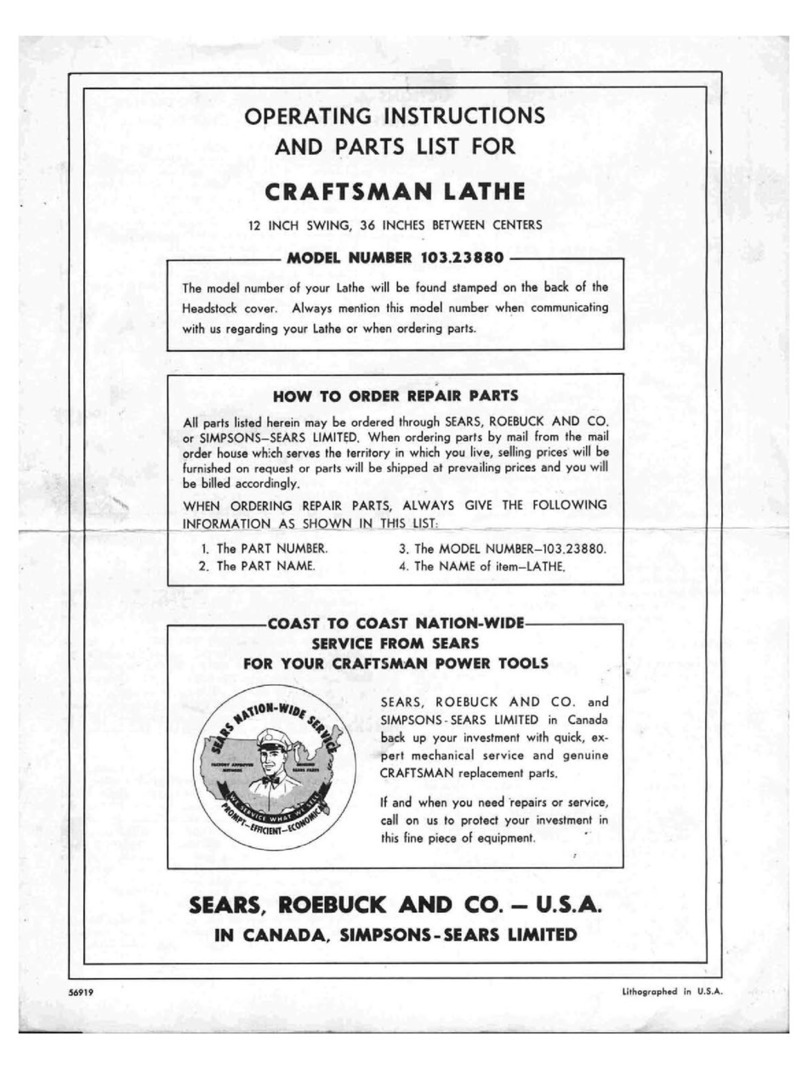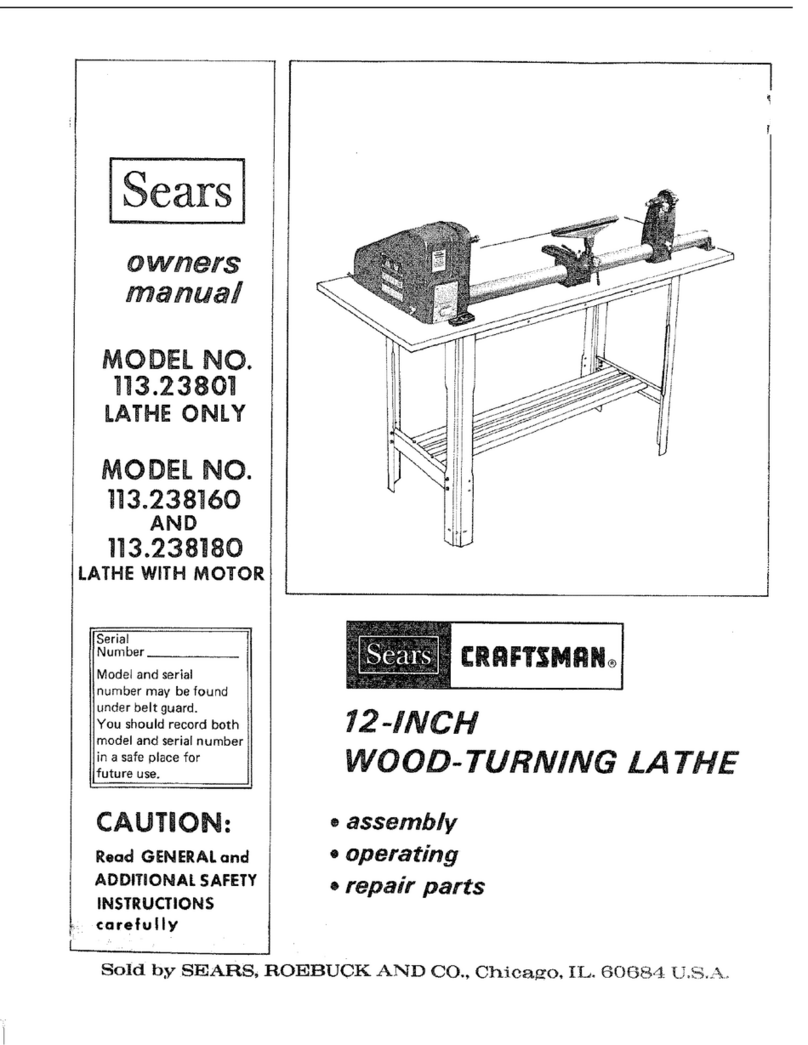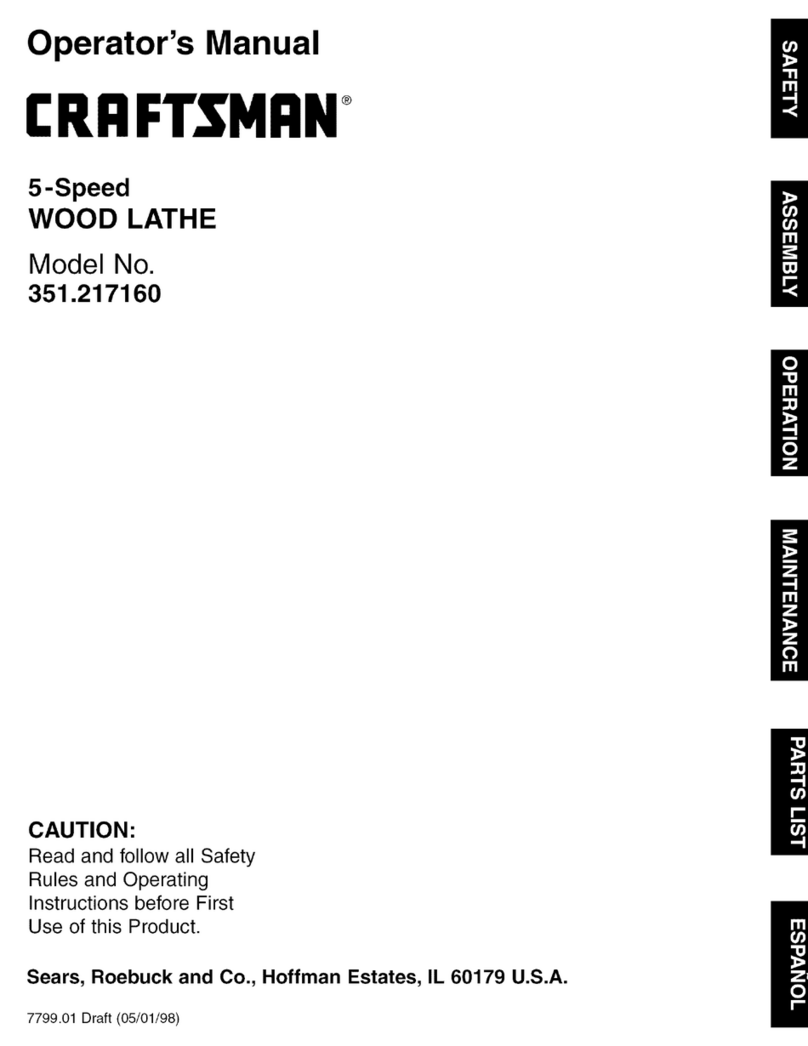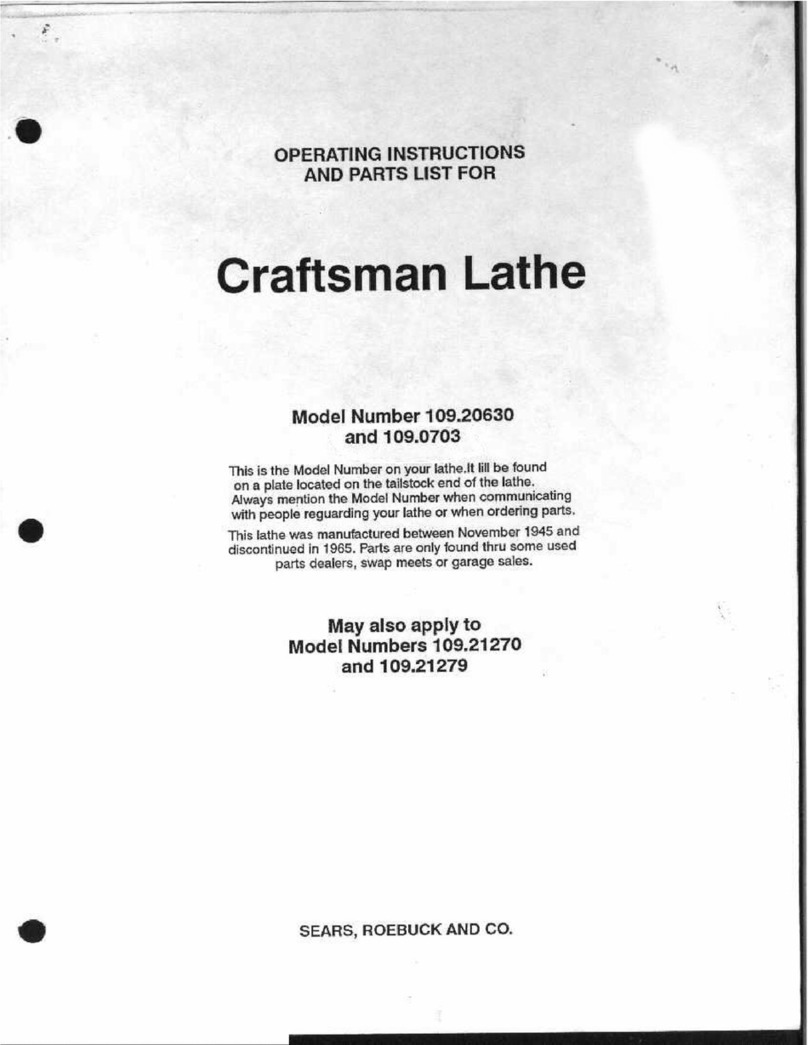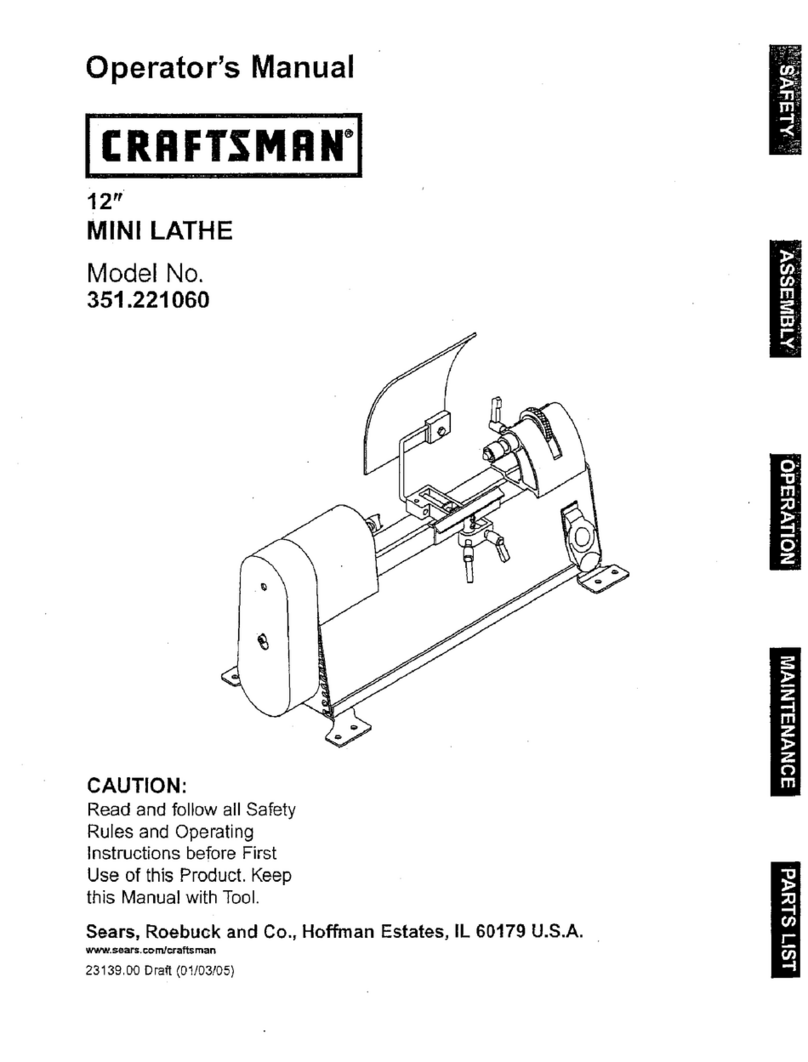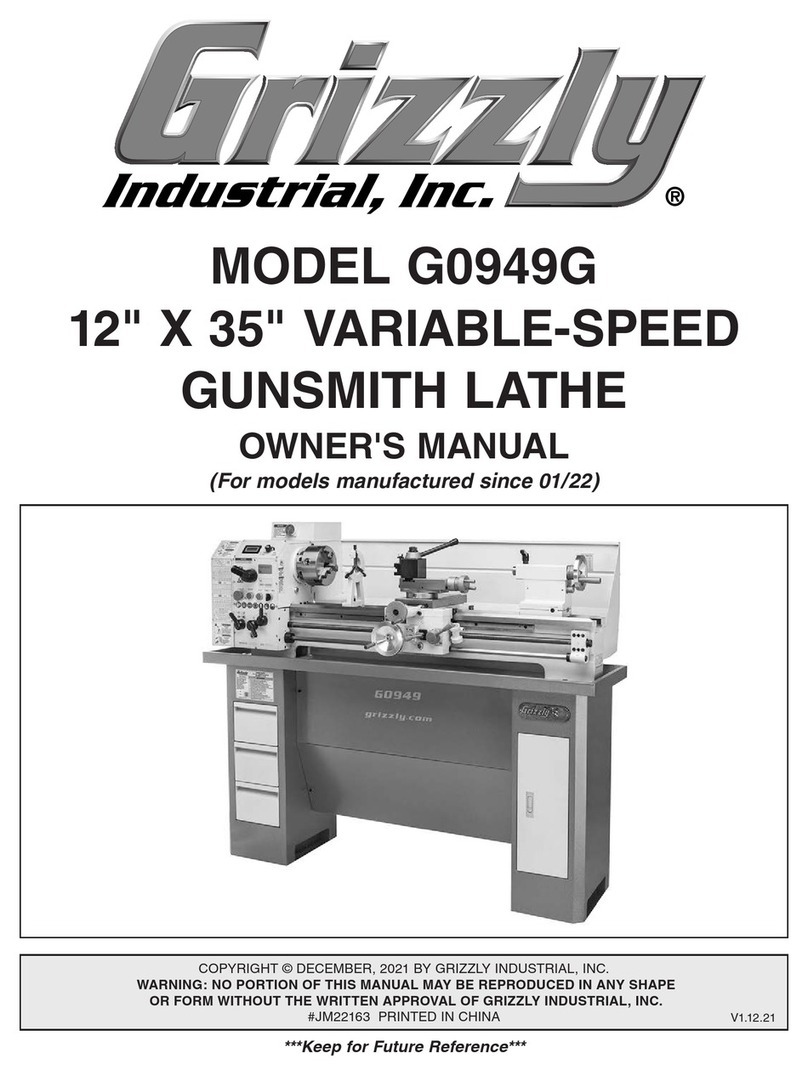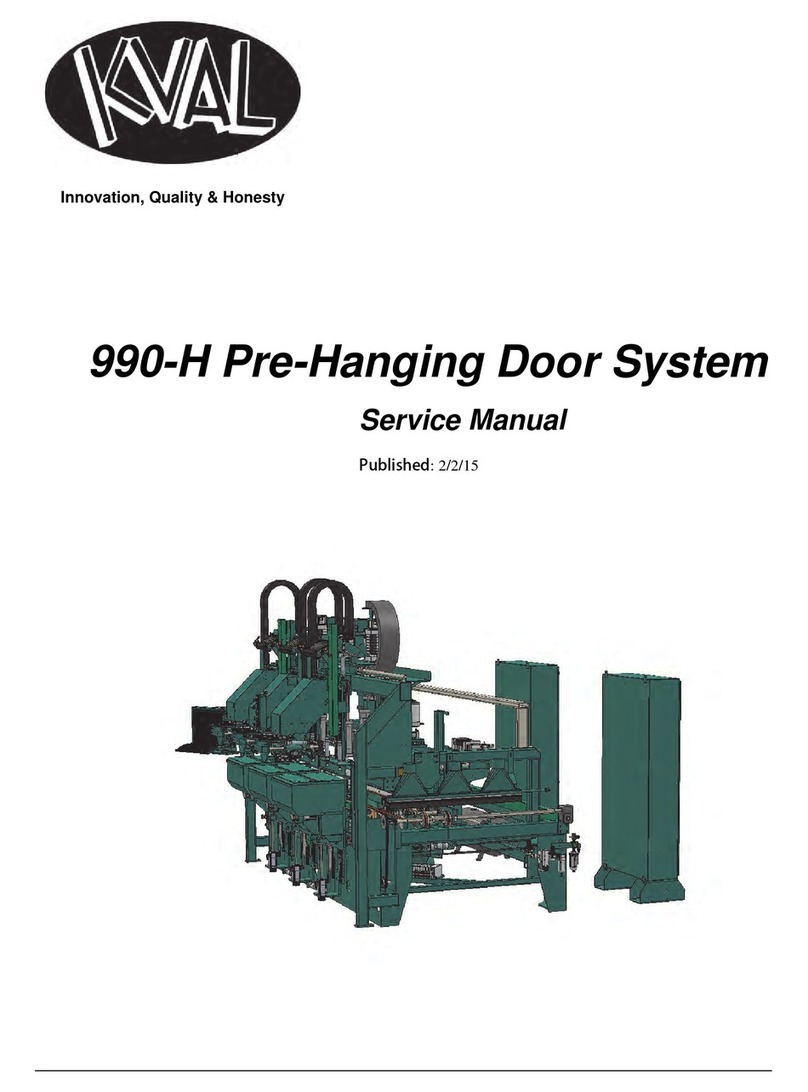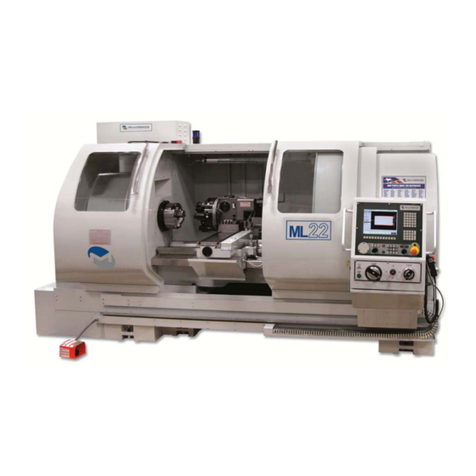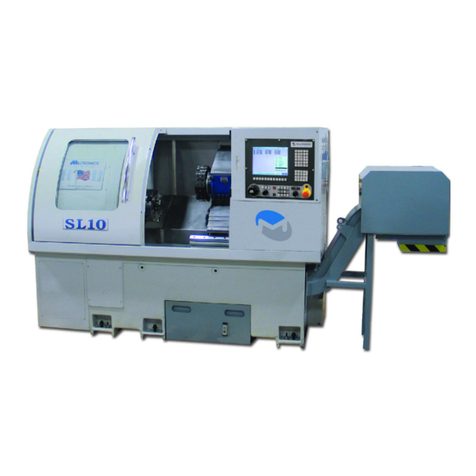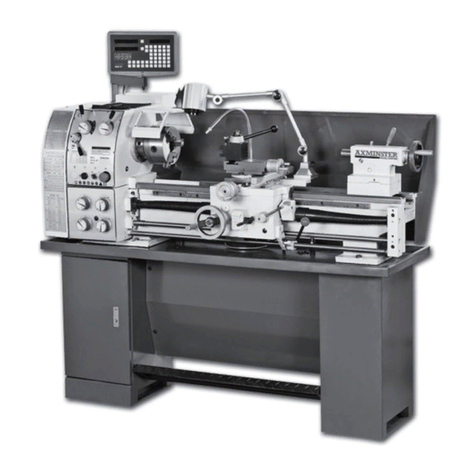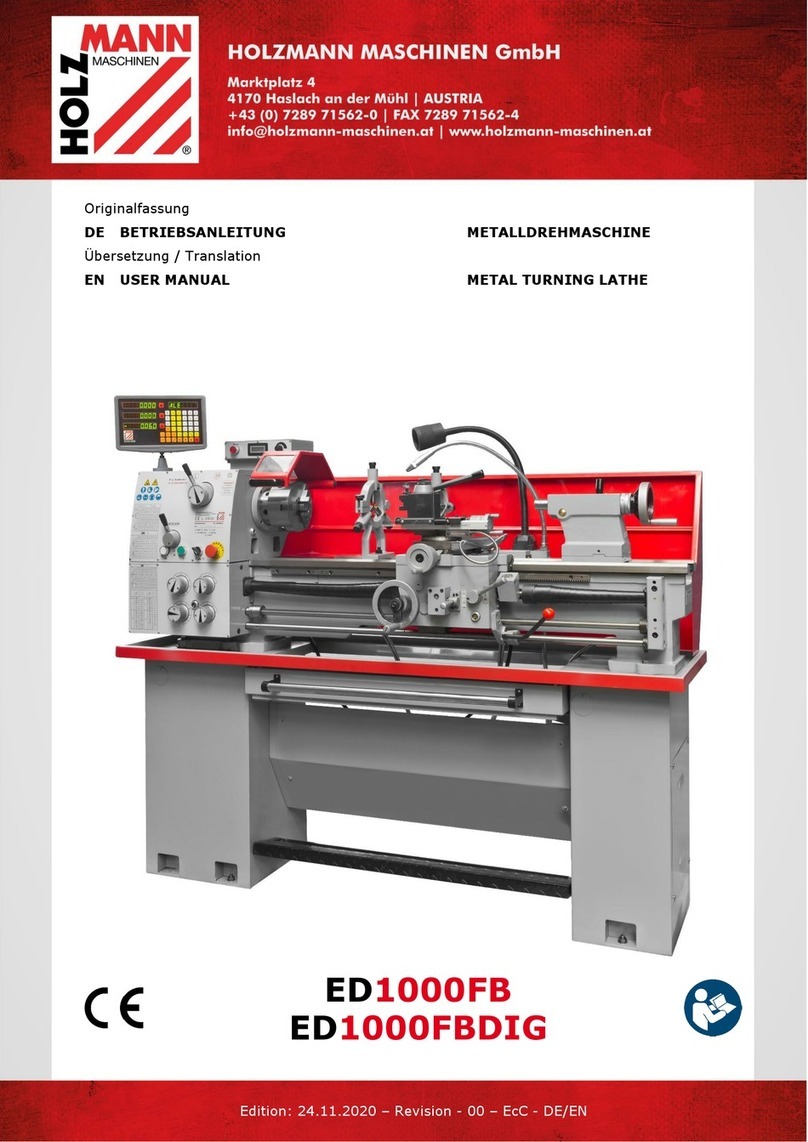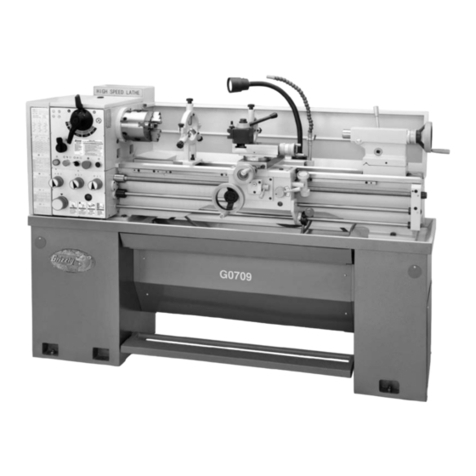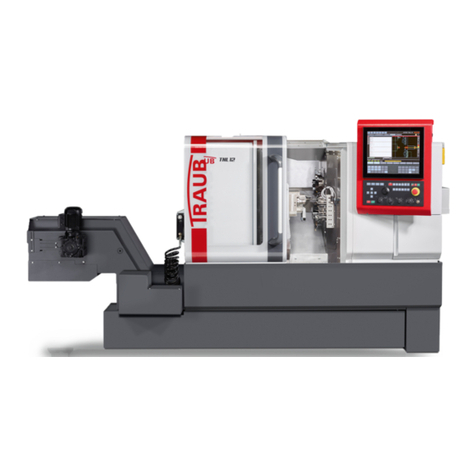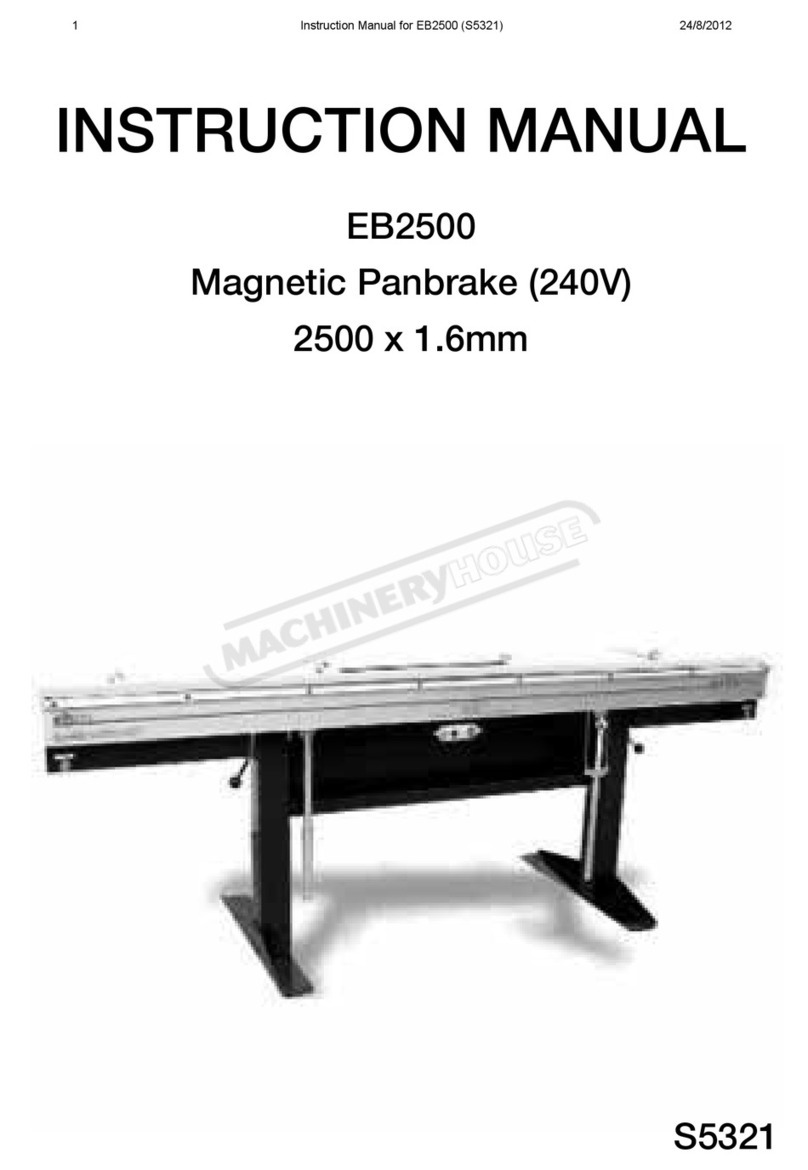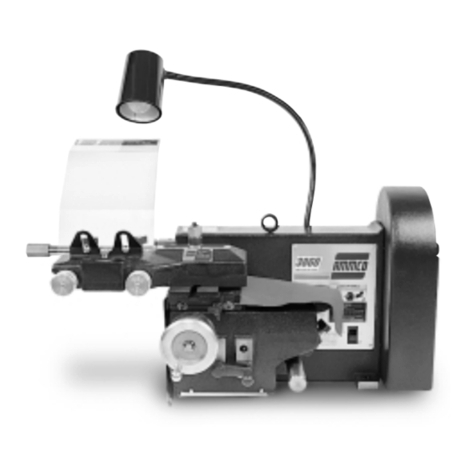WarTar'ity ....................................... 2
Salety Rules .................................. 2-3
Unpacldng ..................................... 3
Assembly ...................................... 4
Installation .................................... 4,-6
Operation ................................... 8-19
Maintenance ................................... 20
Troubleshooting ................................ 21
Parts Illustration and Ust ....................... 24-27
Esp_of .................................... 28-51
FULL ONEYEAR WARRANTY ON CRAFTSMAN
VARIABLE SPEED WOOD LATHE
If this productfallsdue to a detectin materialor workmanship
withinone year fromthe date oi purchase,Sears will at its
optionrepair or replaceit tree dcharge. Contactyour near-
est Sears Service Center (1-800-4-MY-HOME) to arrangefor
productrepair,or return thisproductto place d purchasefor
replacement.
Ifthis productis usedfor commercialor rental purposes,this
warrantywill applyfor 90 days from the date of pumhase,
This warrantyappliesonly while thisproductis usedin the
UnitedStates.
This warrantygives you specificlegal rights, and you may
also have othar rightswhichvary from stateto state.
Sears, Roebuck and Co., Dept. 817WA, Hottman Estates,
IL 60179
CAUTION: Alwaysfollowproper operating proceduresas
definedin this manual-- even ifyou are familiarwith use of
this or similartools.Remember that being carelessfor even a
fractionct asecond can rasuit in severe personal injury.
BE PREPARED FOR JOB
• Wear proper apparel.Do not wear loose dnthing,gloves,
neckties,rings,bracelets or other jewelry whichmayget
caught in movingpads of machine.
• Wear protectivehaircevedng tocontain longhair.
•Wear salety shoeswith non.aiipsoles.
•Wear saletyglasses onmplying with United StatasANSI
Z87.1. Everydayglasses have only impactresistantlens-
es.Thay are NOT safetyglasses.
•Wear face mask or dustmask it operationis dusty.
•Be alert and think dearly. Never operate power toolswhen
tired, intoKleatedor when taking medicationsthatcause
drowsiness.
PREPARE WORK AREA FOR JOB
Keepwork area dean. Clutteredworkareas ioviteacci-
dents.
Do not use power toets in dangerous environments. Do
not use power tools in damp or wet locations. Do nOt
expose power tools to rain.
•Work area should be properly lighted.
oSears, Roebuck and Co.
Keepvisitorsat a sate distancefrom workarea.
Keep childrenoutoi workplace.Make workshopchild-
proct.Use padlocks,master switchesor removeswitch
keysto preventany unintentionaluse of powertools.
Keep powercordsfrom coming in contactwith sharp
objects,oil, grease, and hOtsurfaces.
TOOL SHOULD BE MAINTAINED
Alwaysunplugtoolprior to inspection.
Consultmanualforspecificmaintainingand adjustingpro-
ceduras.
• Keep toollubricatedand clean for safest operation.
• Keep all pads in worldngorder.Check to determinethat
the guard orOtherpartswilloperate propertyand perform
their intendedfunction.
•Checkfor deranged parts.Check for alignment oi moving
pads, binding,breakage, mountingand any othercondi-
tionthatmay affecta tool'soperation.
•A guard or Otherpad that is damaged shouldbe properly
repairedor replaced.Do nntpedorm maksshiftrepairs.
(Use parts listprovidedto order replacementparts.)
•Never adjustattachments while running.Disconnectpower
to avoid accidentalstart-up.
•Havedamagedorworn powercordsreplacedimmediately,
• Keep cuttingtoolssharpfor efficientand s_est operation.
KNOW HOW TO USE TOOL
•Use righttoolforjob. Do notIorce toolor attachment to do
ajob forwhichit was notdesigned.
•Disconnecttoolwhen changingattachments.
•Avoidaccidentalstart-up.Make surethat the toniis in the
=off"positionbefore pluggingin, turning on satelydiscon-
nector activatingbreakers.
• Do not force tool.It willwork most efficientlyat the rate for
whichit was designed.
• K,_ephandsswayfromchuck,centers and Otharmoving
pads.
•Never leave toolrunningunattended.Turnthe power off
and do not leovetooluntilit comes to acompletestep.
•Do not overreach.Keepproper lootingand balance.
•Never stand ontool,Serious injury could occurit toolis
tippedor i' centers are unintentionallycontacted.
•Knowyourtool.Learnthe leers operation, application and
specificlimitations.
•Handleworkpiececorrectly.Mountfirmly in holding
devices.Protect handsfrom possibleinjury,
•Turnmachineoff ifworkplece splitsor becomesloose.
•Use cuttingtonleas recornmendedin =Operation."
WARNING: Forysurown salety,donot operateyOUrwood
latheuntilitiscompletelyassembledand installedaccordingto
instructions.
PROTECTION: EYES, HANDS, FACE, BODY, EARS
If any part ct your lathe is missing, malfunctioning,or has
been damaged orbrahen,cease operating immediately
untilthe particularpad is properlyrepaired or replaced,
•We="saletygogglesthatcomplywih UnitedStatesANSI
7R7.1 anda face sttaldordustmask it operatlen isdusty,
Wearear plugsor muffsduring _,.'tandedperiodsct operation.
Small loosepieces ofwood or other objectsthat contacta
spinning workplececan be propelledat very highspeed.
Thiscan be avoided by keeping the latheclean.
